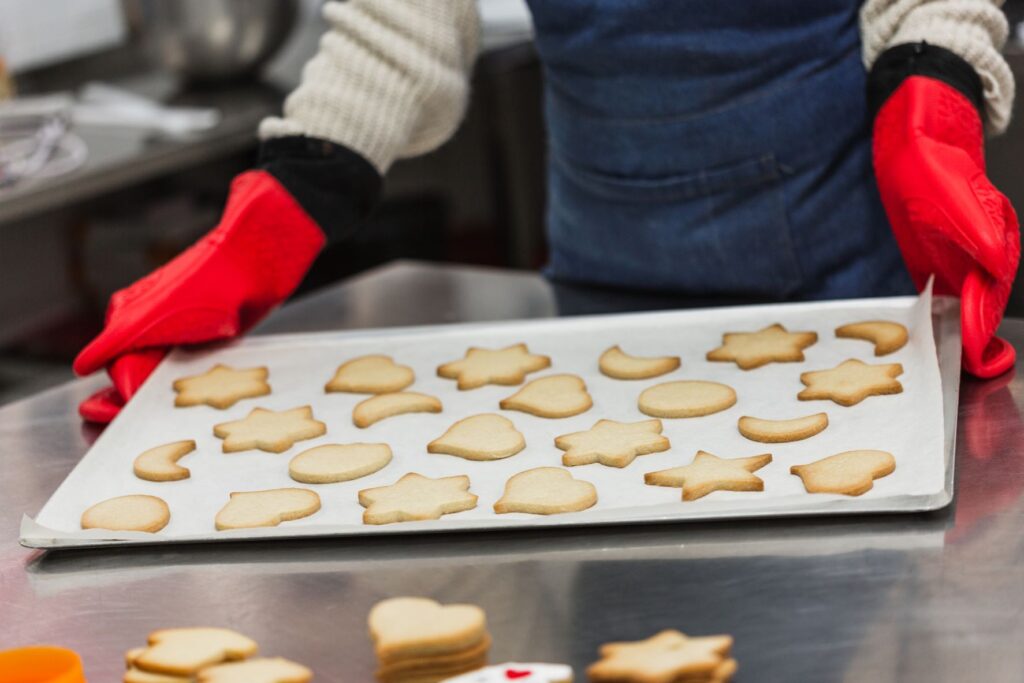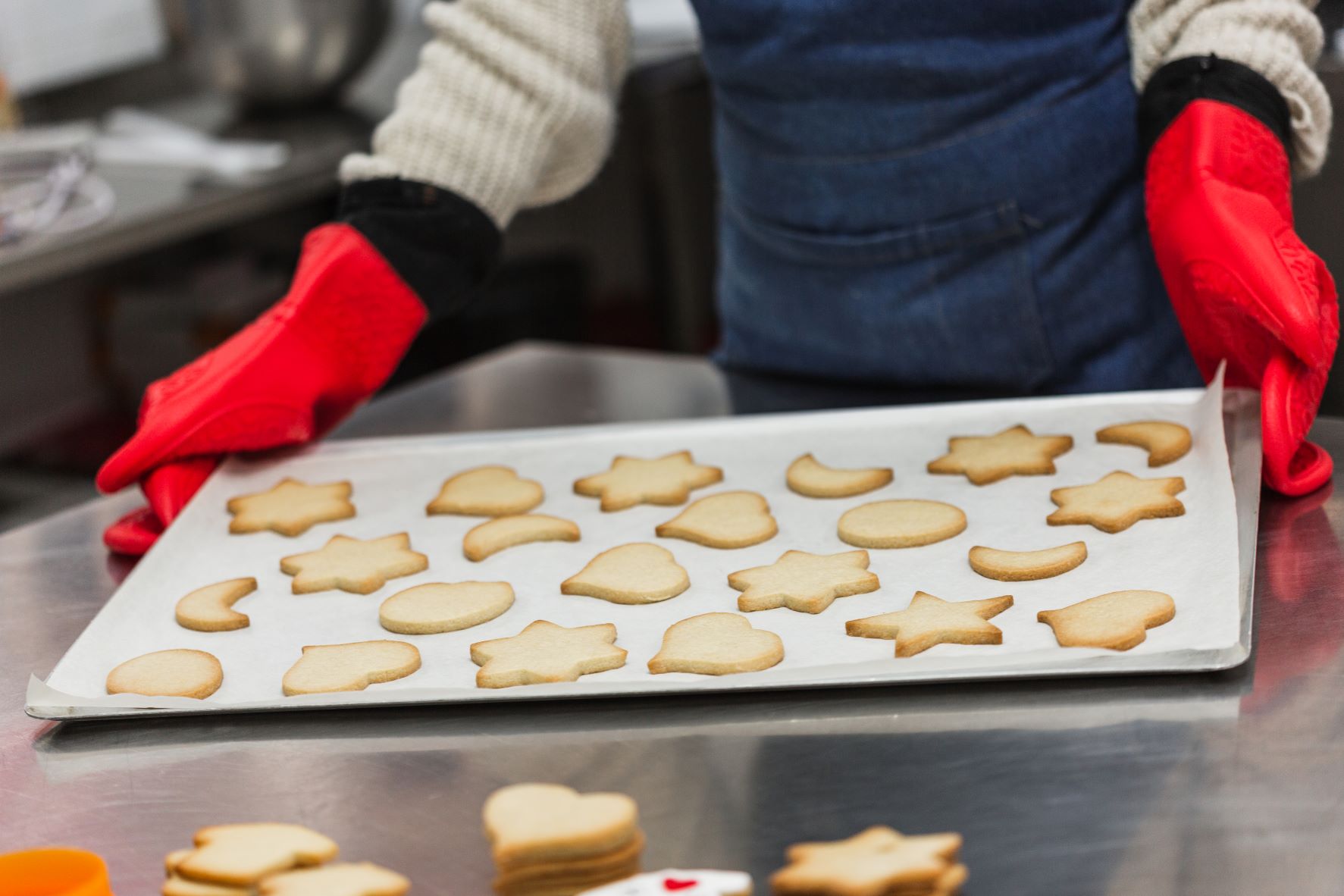What Makes a Cookie Fluffier?
A variety of ingredients can make a cookie fluffier. These include oat bran, chocolate chips, baking soda and cold butter. You should also chill the dough before you roll it out. You should also not beat the butter and sugar too much and don’t leave your dough out for too long.
Oat bran
Oat bran can be used to make cookies fluffier. This superfood is high in fiber and protein. It’s also delicious! It can be used in many dishes, including oatmeal, soups, and casseroles.
Oat bran can be used in place of flour in some recipes. However, you will need to ensure that the recipe calls for it. Baking soda can be substituted with baking powder if the recipe calls.
For a simple chocolate chip cookie, use oat bran in place of half the flour in the recipe. After all the ingredients have been combined, add the oat brn.
You’ll need more eggs to make a cake. Mix the rest of the all-purpose flour with eggs. You can also add another yolk. This will increase the dough’s puffiness and make it more cake-like.
Oat bran can be used to keep your cookies from spreading too much. Adding oat bran to the recipe will give your cookie a chewy, nutty taste.
You can make the same recipe with whole wheat flour. Just add a bit more flour if needed.
Oat bran can also replace breadcrumbs. To make your loaf chewier, add some oat bran when baking. Alternatively, you can try using cottage cheese.
Baking soda
Most cookie recipes include the use of baking soda. This is because baking soda helps make cookies fluffy and chewy. Baking soda makes cookies puffy because it raises the pH and releases carbon dioxide gas.
The main function of the soda is to act as a leavening agent. It reacts with the acid in the dough.
The other important thing about baking soda is that it helps keep your cookies soft. You need to make the best cookies possible. Before you bake, be sure to check the expiration date on all your ingredients. If you don’t, your cookies might become greasy or flat.
There are a number of different types of soda. One of these is sodium bicarbonate, also known as baking soda. Baking soda can also be substituted with potassium bicarbonate and other sodas. These are less effective in sugar-based dense cookies.
To make a fluffy cookie, you should try to mix baking soda with the right amount of liquid. But, this is not always easy to do. A good rule of thumb is to reduce the liquid by a quarter or a half of a teaspoon.
Baking soda and baking powder can be great ingredients. However, they don’t necessarily have to be combined. Sometimes, a baking powder substitution will be required to produce the desired results. You can also add an extra egg in your recipe to give it that puffy, airy feeling.

Chocolate chips
Fluffy chocolate chip cookies are a treat to the taste buds. The right combination of ingredients is key to soft, fluffy cookies. These tasty cookies are packed with chocolate chips, but they can also be flavored by adding other things, like peanut butter or butterscotch.
A good recipe to make fluffy cookies will have eggs and flour. These two elements combine to create a cakey texture.
Eggs are a great way to help cookies retain their shape and add moisture to the batter. Baking soda is also important as it helps the cookies rise. You can mix the dry and wet ingredients together by hand if you don’t own a mixer. You can use either brown or white sugar.
It is also recommended to use a mixture of shortening, butter, and other ingredients. This helps the dough retain its shape and makes it thicker. But keep in mind that too much butter and shortening can make the cookies too cakey.
Using a silicone baking mat will prevent your cookie from spreading. For a better result, you can bake your cookies on a cool surface.
If you want a puffier cookie, use a higher proportion of flour. Use a food scale to measure your ingredients. Be sure to spoon the flour into the measuring cup to avoid over packing.
Add a little vanilla extract to your baking mix. This will enhance your cookies’ flavor.
Chilling the dough
Chilling the dough is important for creating fluffy cookies. It helps to make the fat in the cookie firm. This step is necessary to ensure that the dough does not become too soft during baking.
There are several ways to make a fluffy cookie. You can add extra egg, cut the sugar, or use cake flour. Baking soda or baking powder can be added to the recipe to help. A silicone mat is another option to prevent spreading.
For the best cookies, chill the dough at least 30 minutes. The cookie will become thicker and more chewy the longer it is chilled.
You can freeze the dough in case you are running out of time. This will give you puffier cookies and a tastier bake. However, you won’t be getting the same benefits as with chilled dough.
Many recipes call for chilling the dough. Most top bakers recommend chilling it for at most 24 hours. Some recipes suggest up to 72 hours. You should chill the dough before baking.
The chilled dough makes cookies fluffier and gives you a nice even bake. It’s also easier to scoop.
For the best results, chill the dough until it’s room temperature. This will make it easier and will prevent sugar and fat from spreading.
The chilled dough also allows the ingredients to mix better and create a better consistency. Cookies made with chilled dough will be more flavorful.
Avoiding over-beating the butter and sugar
The creaming of butter and sugar is an important step in baking cookies. This is because it creates the cookie’s volume. However, there are several mistakes you can make when mixing these ingredients. The outcome of your recipe, the mixer you use, and the ingredients that you use will all affect how it turns out.
When mixing the two, a common mistake is to under-mix the butter. This can cause clumps of unincorporated fat to form and burst when heated. It can also result in cookies losing their shape.
You should also pay attention to how long it takes to beat the ingredients. You should beat them for no less than 2 minutes. You might be able to beat them for a few minutes with a more powerful mixer.
In addition to over-mixing, you can also make the wrong mix of ingredients. If your recipe calls for 1 cup of baking powder, don’t add just 1 tablespoon. A teaspoon of baking soda should also be used in a cookie, as it gives it a nice rise.
Over-creaming butter is another common mistake. This can cause your dough to have too much air. Too much air makes your cookies puffy and cakey.
You get the best results by beating the ingredients until they become pale and fluffy. A medium-speed mixer is required to achieve this.
Butter that has melted too quickly
If you don’t like overcooking your cookies, a good knowledge of how butter is heated is essential. Aside from ensuring your oven is not too hot, you can also try using a thermometer to keep things in check.
Managing butter that melts before it reaches its intended temperature can make or break your cookies. This is especially true for butter substitutes with too much moisture. In order to keep your cookies from getting too greasy, you should use a baking mat and parchment paper. The best part about baking with real butter is that it has a superior taste.
You could use a microwave to shave some time off the process, but this can actually hurt you in the long run. Butter that is cold before it hits the oven will allow it to melt more easily.
You can also soften butter by cutting it into small pieces. This will prevent fat clumps from forming. To get the most out of this method, it is a good idea to use a silicone baking mat, since it helps to prevent the fat from sticking to the surface.
You might consider purchasing a thermometer and silicone baking mat if you really want to learn how to get your pixie to bake cookies.
